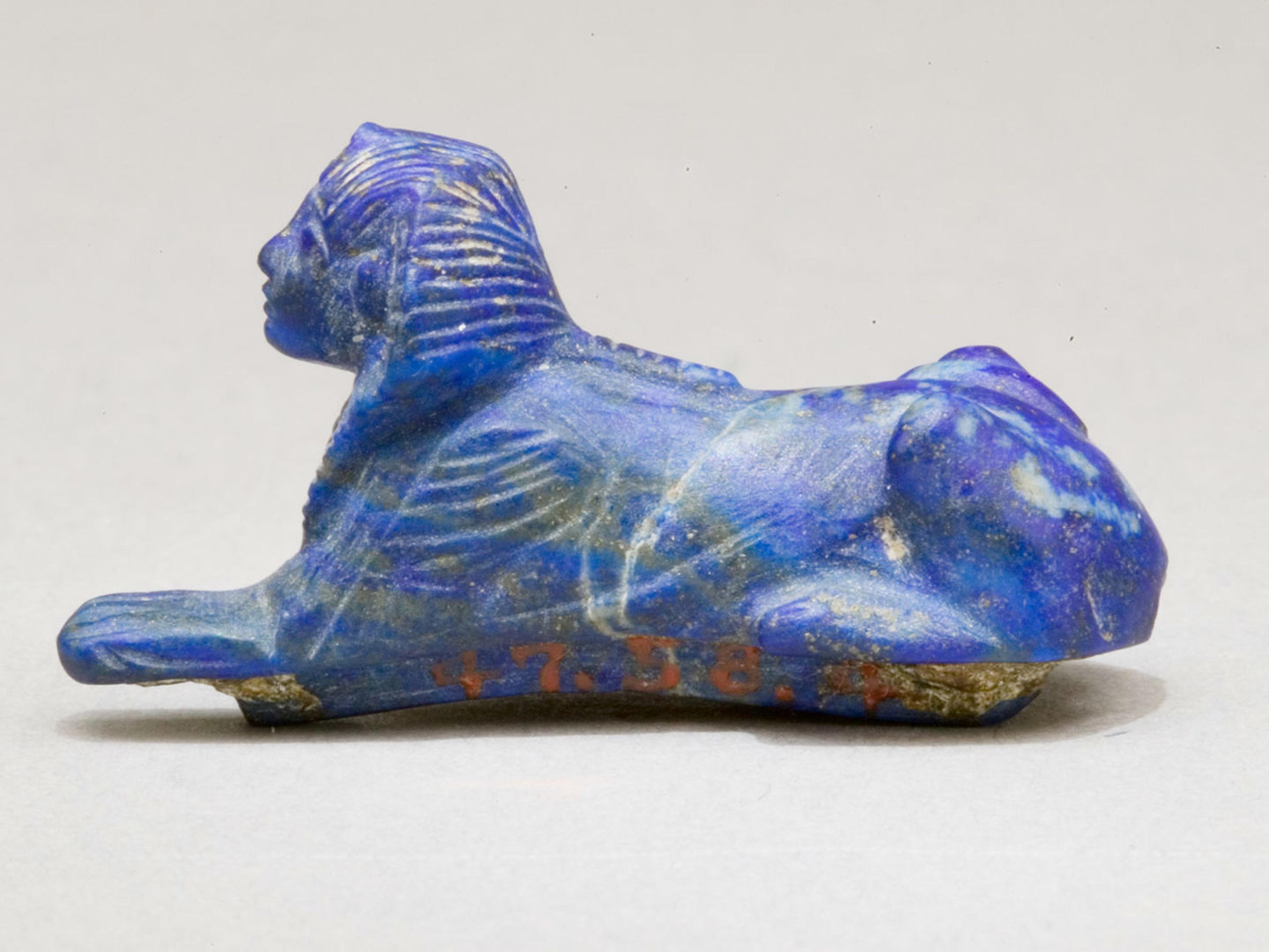Met and Egyptian Government Jointly Announce Recognition of Egypt's Title to 19 Objects

Bracelet inlay in the form of a sphinx (one paw broken), lapis lazuli, height 1.7 cm (0.7 in.), length 3.4 cm (1.3 in.), former Museum accession number 47.58.4.
«Met Director Thomas P. Campbell and Zahi Hawass, Secretary General of the Supreme Council of Antiquities of Egypt, announced jointly today that, effective immediately, the Museum will acknowledge Egypt's title to nineteen ancient Egyptian objects in its collection since early in the 20th century.» All of these small-scale objects, which range from study samples to a three-quarter-inch-high bronze dog and a sphinx bracelet-element, can be attributed with certainty to Tutankhamun's tomb, which was discovered by Howard Carter in 1922 in the Valley of the Kings. The Museum initiated this formal acknowledgment after renewed, in-depth research by two of its curators substantiated the history of the objects.
Mr. Campbell stated: "Research conducted by the Museum's Department of Egyptian Art has produced detailed evidence leading us to conclude without doubt that nineteen objects, which entered the Met's collection over the period of the 1920s to 1940s, originated in Tutankhamun's tomb. Because of precise legislation relating to that excavation, these objects were never meant to have left Egypt, and therefore should rightfully belong to the government of Egypt. I am therefore pleased to announce—in concert with our long-time colleague Zahi Hawass, who has contributed so greatly over many years to the recognition and preservation of the historic treasures of Egypt—this formal acknowledgment that title to the objects belongs to Egypt."
"This is a wonderful gesture on the part of The Metropolitan Museum of Art," said Zahi Hawass. "For many years the museum, and especially the Egyptian Art department, has been a strong partner in our ongoing efforts to repatriate illegally exported antiquities. Through their research, they have provided us with information that has helped us to recover a number of important objects, and last year, they even purchased and then gave to Egypt a granite fragment that joins with a shrine on display in Luxor, so that this object could be restored. Thanks to the generosity and ethical behavior of the Met, these 19 objects from the tomb of Tutankhamun can now be reunited with the other treasures of the boy king."
Dr. Hawass also announced that the objects will now go on display in the exhibition Tutankhamun and the Golden Age of the Pharaohs at Discovery Times Square Exposition, where they will stay until January 2011. They will then travel back to The Metropolitan Museum of Art, where they will be shown for six months in the context of the Metropolitan Museum's renowned Egyptian collection. Upon their return to Egypt in June 2011, they will be given a special place in the Tutankhamun galleries at the Egyptian Museum, Cairo, and then will move, with the rest of the Tut collection, to the Grand Egyptian Museum at Giza, scheduled to open in 2012.